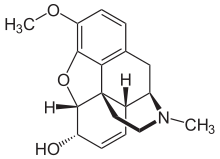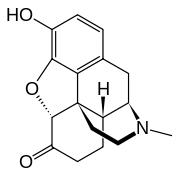OPIATES
Classification: Narcotics, analgesics
Background: Opiates have been used for thousands of years for treatment of pain and remain the primary drugs used in pain management. Opium, which is derived from the unripe seeds of the poppy plant, Papaver somniferum, is the source of the naturally occurring opiates codeine and morphine. The term “opiates” refers to codeine and morphine, which occur naturally, and to the semisynthetic compounds hydrocodone, hydromorphone, oxycodone, oxymorphone and heroin, which are derived from codeine and morphine. The term “opioids” refers to compounds that act on the opioid receptors. Methadone, buprenorphine, meperidine, tramadol and fentanyl are opioids, not opiates. Morphine is the prototypical opiate to which all other opiates and opioids are compared.
Questions? Contact us!
Poppy Seeds: Poppy seeds contain enough codeine and morphine so that their consumption can result in both morphine and codeine detected in the urine. Poppy seed consumption always results in a morphine level less than 2,000 ng/mL, whereas heroin use results in much higher levels of morphine. The morphine / codeine ratio is similar following both heroin and poppy seed use (the morphine level is about 5 to 10 times the codeine level); thus an interpretation problem arises unless 6-acetylmorphine (6-AM) is detected in the same specimen. The federal government raised the mandatory cutoff level for opiates in workplace drug testing from 300 to 2,000 ng/mL in December 1998 to avoid the need to interpret many ambiguous test results.
Physiological Effects: Analgesia (pain relief), respiratory depression, constipation. Long-time use leads to dependence and tolerance such that a dramatic increase in dose is necessary for the same analgesic effect. Tolerance begins after the initial dose but is usually significant only after the second week of chronic use. A 35-fold increase in dose may be necessary for the same effect. Withdrawal symptoms may begin 6–8 hours after the last dose and reach a peak at 36–72 hours.
Is it possible to test positive for morphine or heroin use after eating a poppy seed bagel? Learn more about drug testing result interpretation and what a morphine-positive result may mean.
Psychological Effects: Sedation, euphoria, mental clouding
Toxicity: Respiratory depression/failure is the greatest risk associated with opiate abuse, aside from the risk of infection associated with illicit intravenous drug use.
Other Opiates: Oxymorphone, levorphanol, butorphanol, nalbuphine and buprenorphine are classified as narcotics. Dextromethorphan is not a narcotic and is used as an antitussive. Naltrexone and naloxone block the narcotic effects of heroin and other opiates.
Non-opiate Narcotics: Propoxyphene (Darvon), meperidine (Demerol) and methadone all exhibit narcotic analgesic properties similar to opiates. Although these drugs are sometimes classified as opiates, they do not share the same opiate chemical structure and therefore are classified separately for testing purposes.
Summary: The high potential for dependence and tolerance is the hallmark of the opiates. Although heroin is best known for its addictive properties, people also become dependent upon prescription drugs containing codeine, morphine, hydrocodone and oxycodone.

Prescribed as: Tylenol-3, methylmorphine, Robitussin-AC, some nonprescription cough syrups (in limited states), combined with many other prescription drugs
Mode(s) of Use: Oral
Metabolism: The principle metabolites of codeine are morphine, norcodeine and, to a small extent, hydrocodone. All three are excreted in the urine. Codeine is normally present in the urine at levels greater than morphine. However, in the last 6–12 hours of the elimination process, as the levels drop toward zero, the morphine level can surpass the codeine level, complicating the interpretation of the urine drug test results.
Detection Time in Urine: 1–4 days
Detection Time in Oral Fluid: 1–2 days

Appearance: Powder or rock
Mode(s) of Use: Injection or nasal insufflation (snorting) (up to 200 mg daily)
Metabolism: In the body, heroin readily crosses the blood/brain barrier and is rapidly converted to 6-acetylmorphine (within a few minutes.) 6-AM is further metabolized to morphine (within hours.)
Heroin usually contains codeine because it is manufactured from opium, which contains morphine and codeine at a ratio of approximately 10:1. Heroin is rapidly metabolized in the body, first to 6-AM and then finally to morphine. Heroin, the parent drug, is so rarely detected in the urine following heroin use that laboratories do not normally test for it. 6-AM is a unique metabolite of heroin and its presence is unambiguous evidence of heroin use. However, it is usually only detected in the first 12 hours following heroin use. When the morphine level is less than 2,000 ng/mL, performing the test for 6-AM could be futile. However, the absence of 6-AM does not rule out heroin use.
Specific Issues: Following either heroin use or poppy seed consumption, morphine and codeine are detected in the urine, with the morphine level approximately 10 times the codeine level. However, poppy seed consumption alone rarely results in a morphine level greater than 2,000 ng/mL. When the codeine level is greater than ~1/2 the morphine level, the source is probably codeine use. When only morphine is detected, the source is probably pharmaceutical morphine.

Prescribed as: Vicodin, Lortab, Anexsia, Panacet, dihydrocodeine, and combined with other prescription drugs.
Mode(s) of Use: Oral
Metabolism: The principle metabolite of hydrocodone is hydromorphone. Both are excreted in the urine.
Detection Time in Urine: 1–4 days
Detection Time in Oral Fluid: 1–2 days

Prescribed as: Dilaudid, dihydromorphinone
Mode of Use: Oral, injection or as suppositories
Metabolism: Hydromorphone is excreted in the urine principally as the parent drug and its glucuronide conjugate.
Detection Time in Urine: 1–4 days
Detection Time in Oral Fluid: 1–2 days

Prescribed as: Morphine-sulfate, MS-Contin, Duramorph, Astramorph, Roxanol
Appearance: Pills, suppositories, injectable solutions
Metabolism: About 87% of a dose of morphine is eliminated in the urine as the parent drug or as its glucuronide conjugate. Morphine does NOT metabolize to codeine. Following morphine use, only morphine is reported as detected in the urine.
Detection Time in Urine: 1–4 days
Detection Time in Oral Fluid: 1–2 days

Background: The milky residue collected from the opium poppy plant (opium) is the natural material from which opiate compounds are extracted or synthesized. Oxycodone is a semisynthetic opiate derived from opium. Oxycodone, like other opiates, is characterized by its analgesic properties and the tendency for users to form a physical dependency and develop tolerance with extended use. It is a commonly prescribed analgesic taken orally, frequently in combination with acetaminophen or aspirin. OxyContin, the time-release form of oxycodone, is supplied in 80-mg doses and is often called “hillbilly heroin.” When the pills are crushed, the contents can be snorted or dissolved in water and injected. Its use as a club drug is reportedly on the increase.
Prescribed as: Percocet, Roxicet, OxyContin, Tylox
Street Names: Oxy; OC; hillbilly heroin
Mode(s) of Use: Oral, crushed and snorted or dissolved and injected
Physiological Effects: Analgesia (pain relief), respiratory depression, constipation. Long-time use leads to dependence and tolerance such that a dramatic increase in dose is necessary for the same analgesic effect. Tolerance begins after the initial dose but is usually significant only after the second week of chronic use. A 35-fold increase in dose may be necessary for the same effect. Withdrawal symptoms may begin 6–8 hours after the last dose and reach a peak at 36–72 hours.
Psychological Effects: Sedation, euphoria, mental clouding
Toxicity: Respiratory depression/failure is the greatest risk associated with opiate abuse, aside from the risk of infection associated with illicit intravenous drug use.
Metabolism: Oxycodone is excreted in the urine principally as the parent drug, its glucuronide conjugate, and its metabolite, oxymorphone.
Detection Time in Urine: 1–4 days
Detection Time in Oral Fluid: 1–3 days
The information provided is for educational purposes only and is not intended to be used as medical or legal advice. Detection times are approximate and may be influenced by a number of factors, including BMI, duration of drug use, dosage and interindividual metabolic differences. For specific drug testing result interpretation questions, please contact us.
